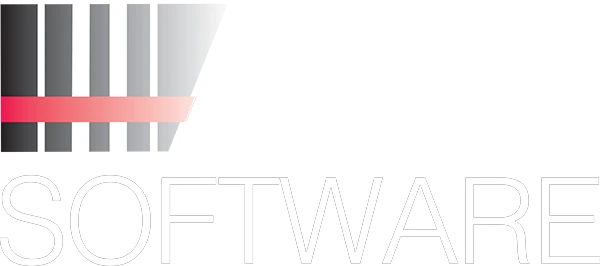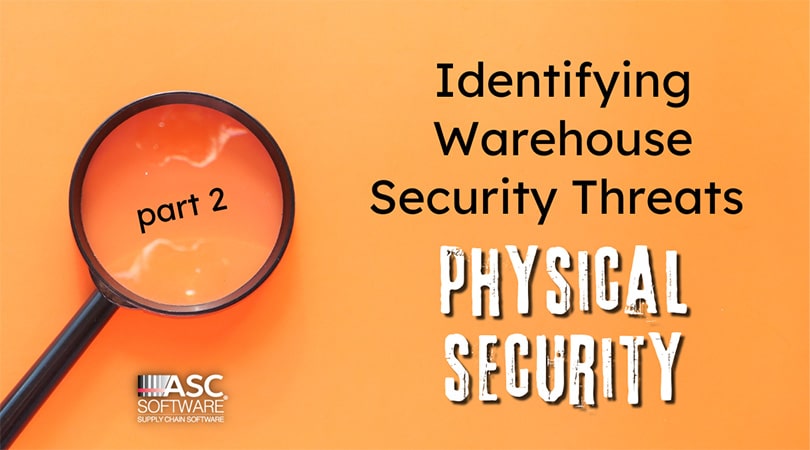In Protect Your Warehouse: Part I – Theft, we discussed identifying, addressing, and protecting your 3PL warehouse against loss of inventory, money, and company-owned property from dishonest employees. Physical warehouse security is also important to the supply chain.
It includes unauthorized access to your facility, unintentional damage of company property or inventory, intentional acts of destruction, and violence in the workplace. Because these incidents do not occur on a predictable schedule, it is critical for everyone in your warehouse to be actively engaged in ensuring that potential threats are eliminated or reduced.
Unauthorized Facility Access
Visitors. It is fair to say that your distribution center is a very busy place with non-employees coming and going at various times. They could be a truck driver, a delivery person, a maintenance technician, or a contractor whom you see all the time or hardly at all. To keep your warehouse safe, it is important to issue visitor badges with limited access and to keep a log of who is visiting the facility at any given time.
Tag-A-Long and Courtesy Access. Anyone can enter your facility very easily using either one of these methods. Tag-a-long access refers to someone following an authorized employee into the warehouse. When they walk confidently as if they have an appointment, employees will often not question them. An example of courtesy access would be an employee holding the door open to the facility or to a secured area for someone walking purposefully carrying equipment or simply having their hands full with a tote bag and a cup of coffee.
If your entry system allows for one employee badge scan rather than a carousel-type gate that requires each person to scan their ID, your entryways may be vulnerable to unauthorized access. Train your employees on proper security access policies and address non-compliant situations immediately.
Stolen or Lost Identification. While a security system that incorporates scannable employee ID badges is a good way to control warehouse access, it is not 100% flawless. Access badges can sometimes go missing or are stolen, which could allow an unauthorized person to enter the facility. All employees should notify management immediately if their badge is lost or stolen so a new ID can be issued and the old one removed from system access.
Break-ins and Robberies. Unfortunately, warehouses are often considered soft targets by outside thieves who are looking for money, inventory, or other items that can be resold easily. Robberies can be very personal and potentially lead to harm to an employee. Break-ins usually happen during off-hours when a 3PL or warehouse is closed with little human contact.
It’s expensive to hire an armed security guard or guard dogs. By instituting authorized ID badge access entry, securing your facility, and adding extra security technologies such as alarms and cameras, you can ensure the safety of your employees and items within your facility.
Unintentional Damage
System Malfunctions, Emergencies, and Employee Accidents. No matter how well you have protected your warehouse against threats to your building, employees, equipment, and inventory, there is always the chance for unintentional scenarios.
Sprinkler systems may malfunction and soak the inventory. An employee may spill a drink on a computer rendering it useless. A forklift driver could accidentally knock over a shelving rack, wreaking havoc on the floor. An overloaded electrical outlet could catch fire. You may be faced with a sudden infestation of bugs or animals that can destroy inventory and equipment. Gas leaks and chemical spills could even lead to evacuation and hazmat clean-up. Any one of these situations can happen out of the blue.
Be sure to have a warehouse safety plan, conduct regular inspections, adopt preventative maintenance measures, and provide continual employee training to avoid any potential incidents.
Weather. The one thing everyone can agree on – the weather can be very unpredictable! Over the past several years, severe weather incidents and extreme temperatures have been reported more frequently, directly affecting the supply chain worldwide. Depending on your location, your warehouse or suppliers could suffer damage in the wake of wildfires, hurricanes, tornadoes, earthquakes, or flooding. Roads and bridges could be destroyed or become impassable as well. Do you have a backup plan if your warehouse, customers’ facilities, suppliers, or transportation routes were damaged as a result of severe weather?
According to a study referenced in Harvard Business Review, a manufacturing or warehousing site is considered resilient if it has a functional business continuity plan that covers emergency and crisis management protocols, stakeholder communications, disaster recovery, and insurance. The study found that 80% of the studied United States sites have no business continuity plans or alternative facilities lined up that could be put into operation quickly. Basically, they are unprepared for operational disruptions.
By talking to your customers, suppliers, and others in the warehousing industry, you may be able to come up with possible backup facilities, shipping options, or alternate suppliers in case of weather-related emergencies.
Intentional Acts of Destruction
Vandalism. Vandalism is defined as an action involving deliberate destruction of or damage to public or private property. Criminals may argue that vandalism is a victimless crime. While it may not directly cause physical harm to a person per se, it does directly affect the people who own and operate 3PLs and warehouses both financially and emotionally. By installing security lighting, alarms, and cameras, plus signage that indicates your property is protected by these devices, your company can thwart any would-be vandals from committing a crime against your warehouse.
Arson. Nobody wants to see their warehouse completely or even partially destroyed by an intentionally set fire. It is important to maintain your warehouse safety systems such as foam fire suppression and sprinkler systems to protect what’s on the inside of your facility. Regular safety drills and system tests should also be conducted. Once again, signage, security lighting, cameras, and alarms will help prevent a potential crime of arson.
Violence Against Your Facility. This form of intentional destruction is more commonly referred to as ideological violence, riots, or looting. While you may not want to think that your 3PL or warehouse would be susceptible to such an act, it can happen. Ideological violence (a form of terrorism) occurs when an individual or group of people disagree with what your company represents, the products you carry, or your organizational management choices, and takes violent action against your facility or employees.
Riots and looting could occur during global, national, or regional unrest leading to millions of dollars in damage. If you are aware of a protest march scheduled in your area, you might consider proactively hiring guards or boarding up windows to deter break-ins. Consider all forms of internal and external security measures to protect yourself, your employees, and your property against these types of crimes, including consulting a security expert.
Workplace Violence. Violence in the workplace has unfortunately become a more common occurrence over the years. Whether it comes in the form of worker-against-worker assault, domestic violence, a shooting, or an explosive device, your 3PL warehouse should be prepared. Put into place a well-thought-out safety plan for any scenario, just like you would for a tornado or fire drill.
Have a safety committee with set responsibilities to respond to any type of situation within their ability and the authority to contact the proper local authorities as needed. Provide your employees with the means to easily report potential acts of violence before they arise for the best protection. Also, you should immediately address any internal alterations and respond with appropriate consequences for the employees. A zero-tolerance policy helps communicate to employees the risks of bad workplace behavior.
Consider Updating Your Physical Security Systems
There are many ways to enhance security at your 3PL or warehouse. As mentioned above, facility access badge systems, regular maintenance of fire and sprinkler systems, cameras, and alarm systems, and instituting and following comprehensive safety and security plans are just a few ways you can protect your company, products, and employees. It is important to review and update safety procedures on a regular basis to keep them top of mind for all employees.
If you haven’t already, consider adding or updating the following recommendations for extra protection:
- Internal and external security cameras with remote (cloud) backup
- Brighter lighting for unlit or dimly lit areas
- Professional alarm system
- Security guards and/or security checks at day’s end
- Access control systems and security cages
- Warehouse management system (WMS) software for inventory tracking
- Security doors for all entrances and exits
- Window security features
- Regular insurance policy reviews
Subscribe now to be notified when Part Three, Cyber Security, is posted by ASC Software with more valuable information and tips to protect your company and the supply chain. When developing your preventative plan, creating a facility security checklist and knowing how to conduct a physical risk assessment are both important. Hopefully, your 3PL or warehouse never experiences any of the above physical security threats, but it is always best to be prepared. To find out how ASCTrac – the best warehouse management system WMS software – can be a part of your protection plan, contact us today.




